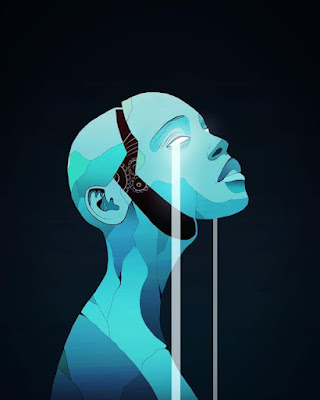The Art of Storytelling Through Visuals: Narrative in Art
Introduction
In the vast realm of artistic expression, storytelling has long been a powerful force, transcending the boundaries of words and finding a home in the visual arts. The marriage of narrative and visuals gives birth to a unique form of communication, one where emotions, ideas, and stories unfold through brushstrokes, colors, and composition. Join me on a journey as we explore "The Art of Storytelling Through Visuals: Narrative in Art."
Unveiling Emotions through Imagery
Artists throughout history have employed the canvas as a stage for emotional expression. From the haunting brushstrokes of Edvard Munch's "The Scream" to the serene landscapes of Claude Monet, emotions are woven into the fabric of their works. Each stroke tells a story, and every color choice conveys a sentiment, allowing viewers to step into the artist's emotional landscape.
Sequential Art: Telling Tales in Series
One of the most explicit forms of visual storytelling is seen in artists who create narrative series. Francisco Goya's haunting "The Disasters of War" or William Hogarth's satirical "A Rake's Progress" are prime examples. Through a sequence of images, artists narrate a story, inviting the audience to follow along as the plot unfolds from one frame to the next.
Symbolism and Allegory: Hidden Narratives
In the world of visual art, not all stories are overtly evident. Many artists employ symbolism and allegory to embed hidden narratives within their works. Take Hieronymus Bosch's "The Garden of Earthly Delights" as an example—a seemingly fantastical painting that unravels a complex allegory about the nature of humanity, morality, and sin.
Personal Narratives: The Artist's Tale
Art becomes a form of autobiography when creators infuse their personal narratives into their work. Frida Kahlo's self-portraits are a striking example of this intimate storytelling. Through vivid depictions of her own experiences, physical pain, and emotional struggles, Kahlo invites viewers into the pages of her life.
The Power of Collaboration: When Words Meet Visuals
Sometimes, the most compelling narratives emerge from the intersection of different art forms. Collaborations between visual artists and writers or musicians give birth to multidimensional storytelling experiences. Consider the collaborations between painter Marc Chagall and poet Bella Rosenfeld, where words and visuals dance together, enriching the narrative.
Contemporary Narratives: Adapting to a Changing World
In the contemporary art scene, artists continue to redefine narrative through innovative mediums. Street art, digital art, and multimedia installations offer new avenues for storytelling. Banksy's thought-provoking murals, for instance, serve as a form of public storytelling that transcends traditional gallery spaces.
Conclusion: The Ever-Evolving Tapestry of Visual Narratives
In the grand tapestry of art, storytelling through visuals remains an ever-evolving and boundless practice. Whether conveying emotions, unraveling sequential tales, or weaving hidden allegories, artists create a rich narrative language that speaks to the depths of human experience. As we explore the intersections of creativity and storytelling, we find that each brushstroke and composition adds another layer to the timeless conversation between artists and their audience.
Art, at its essence, becomes a mirror reflecting the stories of the past, the present, and the untold tales of the future. In the world of visual arts, the canvas becomes a vessel through which stories come alive, inviting viewers to embark on a journey through the captivating realms of imagination and emotion.
Disclaimer: The arts shown above are not mine and are used for education/reference purpose only. Credit to the real artists.











Comments
Post a Comment